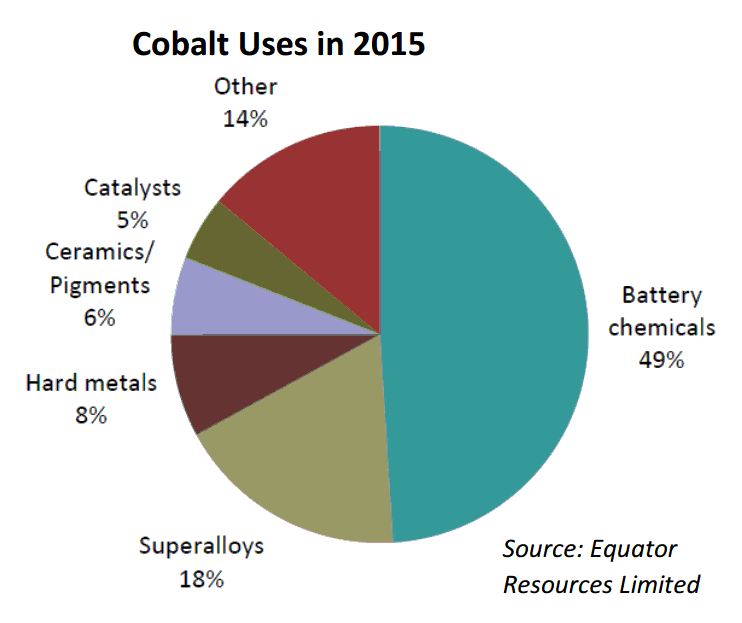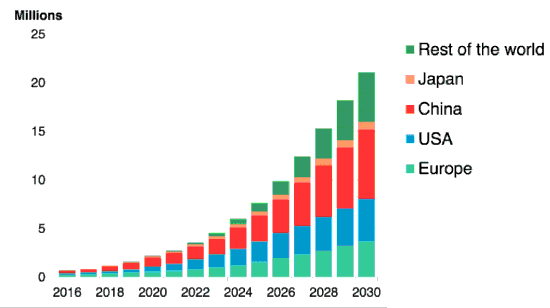If you follow the mining industry Media, you’ll have noted that cobalt has been getting a lot of attention recently. In fact, when we (Cobalt 27), announced the successful closing of our financing, every publication from Bloomberg, to The Northern Miner and The Mining Journal, was hammering on our door for an interview.
Why all the interest? The answer lies both in the explosive demand for the metal from electric vehicle battery sector and in cobalt’s unique supply-side issues.
For those of you new to the sector, let’s start with the basics: Cobalt is a grey and shiny, ferromagnetic metal with a very high melting point (1,405°C). While you may have heard of its importance as a battery metal, it actually has many uses, including:
- EV and other Batteries (Lithium-ion, Ni-Cd and Ni-metal hydride batteries
- Electronics (integrated circuits, semiconductors, magnetic recording, etc.)
- Superalloys (used in turbines, jet engines, nuclear reactors, power plants, etc.)
- Machinery (drills, grinding wheels, seals, valves, etc.)
- Colouring and pigments (primarily used in ceramics)
- Agriculture (cobalt salts used in cattle and sheep feed)

While cobalt is important material for many products and industries, it excels as an electrode and has become an indispensable material in batteries. If you’re not familiar with the direction of the battery industry, all you need to do is think of a steep, upwards curve. To help you visualize, let me throw some stats at you:
- EV (Electric Vehicle) Growth: Production growing +45%/yr1
- Battery Growth: Estimated +500% battery consumption over next 10 yrs1
- The Rise of the Gigafactories: ~230 GWh of capacity expected from up to 20 battery facilities at a cost of ~US$10 billion Mass Market Penetration: Over 120 models of EVs expected by 20202
- Mass Market EV Penetration: Over 120 different models of EVs expected by 20203
- Consumer awareness: Tesla Model 3 pre-orders, were higher, as a percentage of annual auto sales, than iPhone orders were, as a percentage of annual smartphone sales
The Rise of the Electric Vehicle

Now, the same growth story holds true for lithium and other battery materials, so why should cobalt be getting so much investor interest at this time? The answer lies on the supply side.
Cobalt is found throughout the world but typically in such low concentrations that it is uneconomical to mine alone. This means that pure-play cobalt mines are rare. Most cobalt production therefore comes as a by-product of other forms of mining – principally nickel and copper. This, of course, is where it gets interesting because what drives major growth in the nickel and copper markets is not necessarily what drives growth for cobalt.
Cobalt’s status as a by-product means that most producers cannot easily increase production, despite rising demand, because doing so means they must increase production of their primary ore – be it nickel or copper. It has also meant that, to get exposure to cobalt, most investors have had to invest in nickel and copper mines.
So, what we have here is a metal with strong demand but restricted supply and few options for direct investment. In future posts, I’ll delve deeper into these fundamentals to show why Cobalt 27 has been formed to give investors pure-play exposure to this unique sector.




















